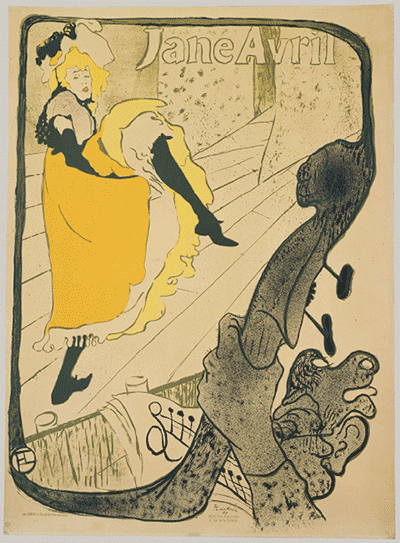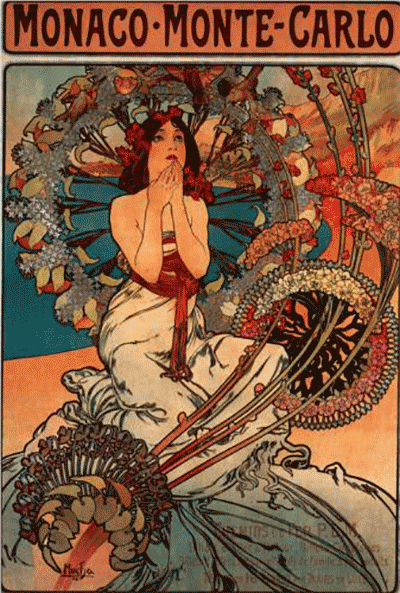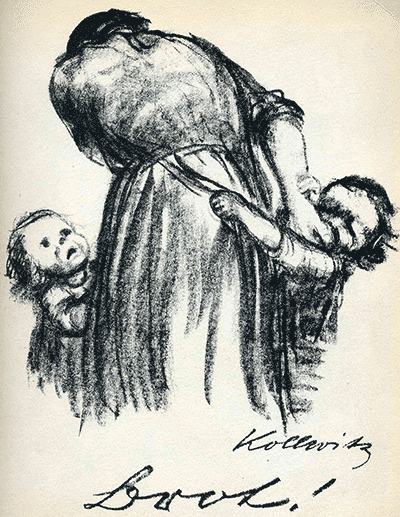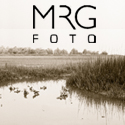|
|
Lithography
Lithography is a printmaking process that makes use of the fact that oil and water don't mix. Grease, in the form of tusche or grease pencil, is applied to the surface of a lithographic stone, or more modern paper lithographic plate; the surface is moistened then ink is applied. The ink sticks to the greased areas but not the moistened parts, then a print is pulled through a press.
Lithography was developed at the end of the 18th century and became widespread by the middle of the 19th century. The advantage to the lithographic process is that a large number of images can be printed in an edition because the plates do not suffer a lot of wear and tear.

Henri de Toulouse-Lautrec; Jane Avril; lithograph printed in five colors; 1893; "Henri de Toulouse-Lautrec: Jane Avril" (32.88.15) In Heilbrunn Timeline of Art History . New York: The Metropolitan Museum of Art, 2000–. http://www.metmuseum.org/toah/works-of-art/32.88.15. (June 2009)

Alphonse Mucha; poster; lithograph; 1897

Kathe Kollwitz; Bread; lithograph; 1924
The images above are in the public domain.
Some sites about lithography:
About Lithographs
The Artist's Press: What is Lithography?
The Metropolitan Museum: Lithography
Britannica Encyclopedia: Lithography
Some artists who worked with Intaglio:
M C Escher
Kathe Kollwitz
Artists Gallery: Kathe Kollwitz
The Metropolitan Museum: Toulouse Lautrec
The Metropolitan Museum: Daumier
Some contemporary artists who work with Intaglio:
Britko Arts: Contemporary Artists
International Contemporary Lithography
Robert Kipniss
Item Editions: William Kentridge


